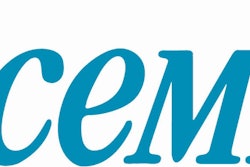 Photo: U.S. Green Building Council
Photo: U.S. Green Building CouncilWhen it comes to meeting LEED v4 certification, landscapers might find themselves overwhelmed with the recent changes.
Since the U.S. Green Building Council announced the new LEED v4 in November, the Irrigation Association has specified the differences between LEED v4 and LEED 2009 when it comes to irrigation.
According to the organization, the key differences are point allocations:
Projects that want to earn LEED certification must satisfy prerequisites within each of LEED’s credit categories in order to earn points — the number of points a project earns determines its level of LEED. In the water-efficiency credit category, LEED v4 adds a mandatory requirement to reduce outdoor water use and three options to earn two points by reducing water use.
In LEED v4, projects can now use metering of irrigation systems to earn points. The latest version of LEED provides credit for projects installing submeters in two different areas where water is used. Landscape irrigation falls into one of these categories, with the installed meter monitoring water usage on at least 80 percent of the irrigated landscape.
In summary, LEED v4 offers the most points when projects do not install irrigation. This might be an option in regions that receive a fair amount of rainfall throughout the growing season, but it certainly isn’t an option in arid regions. These regions need irrigation to help establish plants and to assure that the landscape will be properly maintained to maximize the functional benefits it provides the building site.
Irrigation for future LEED projects will rely on water sources developed on-site, such as rain water harvesting and reclaiming or reusing water that has been used previously for irrigation. LEED is changing the way projects are designed, built and maintained, which also changes the way projects approach landscape and irrigation.
Because LEED v4 was released just a few months ago, the next few years will serve as a transition period in which projects move away from using LEED 2009. Until LEED 2009 is discontinued in 2015, projects are still able to determine which version they will follow to earn their LEED certification. IA members, Netafim USA, Rain Bird Corporation and The Toro Company, have created online resources for projects following LEED 2009.
|
Water Efficiency Category |
|
| LEED 2009 | New LEED v4 |
|
Reduce water use and earn two points by:
|
Mandatory requirement to reduce outdoor water use by:
Reduce water use and earn up to two points by:
|










